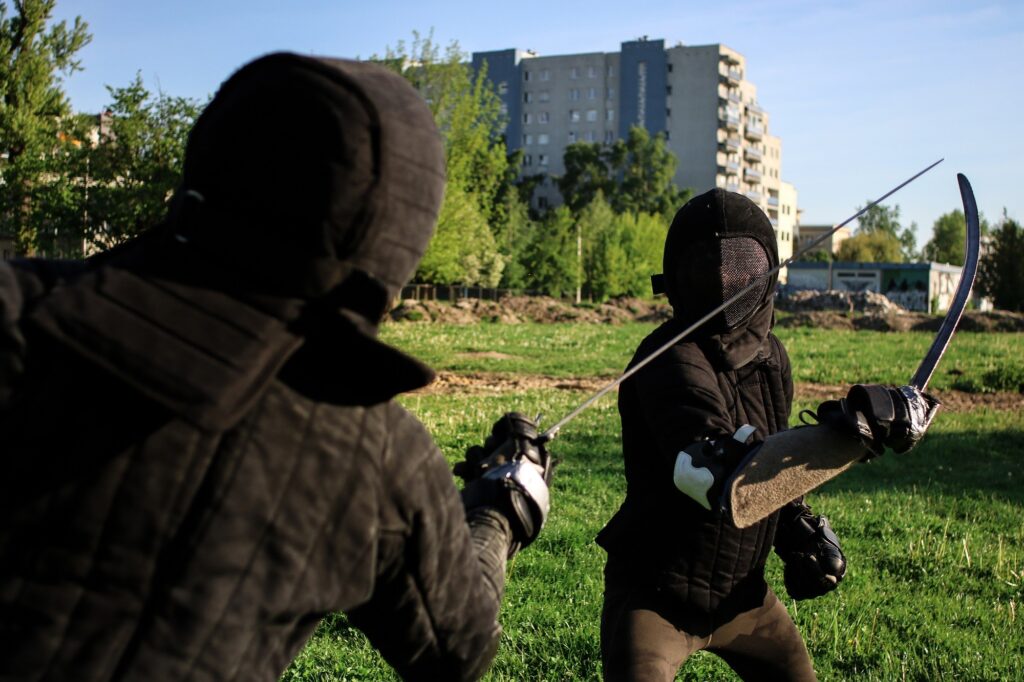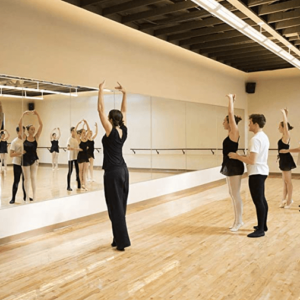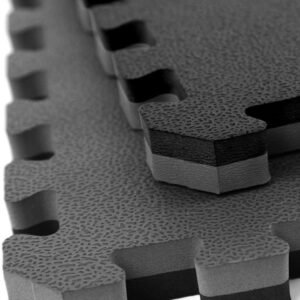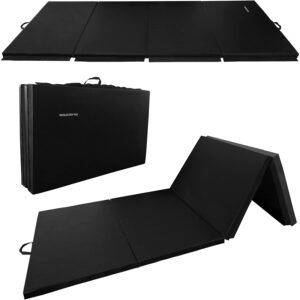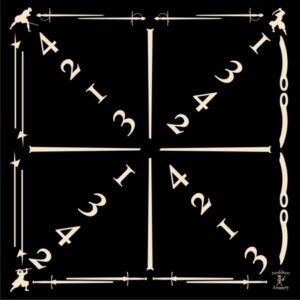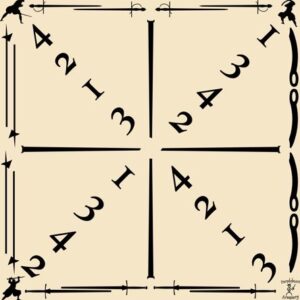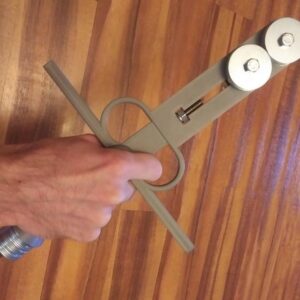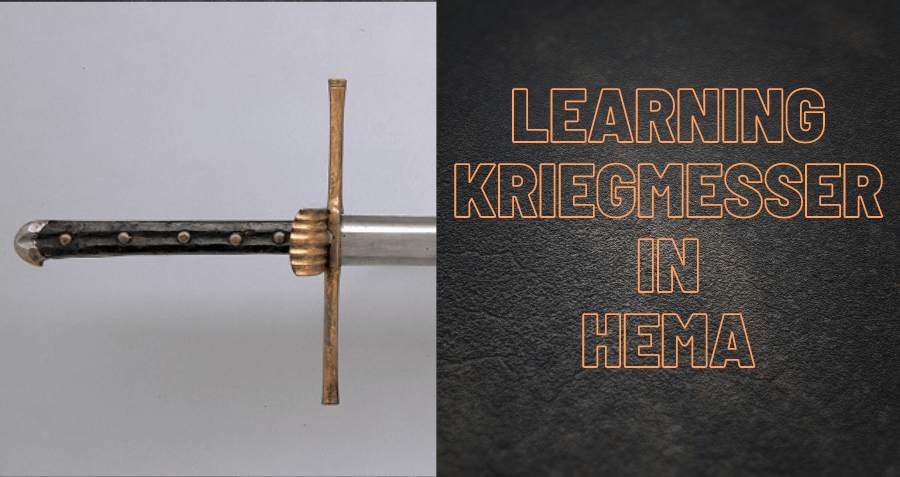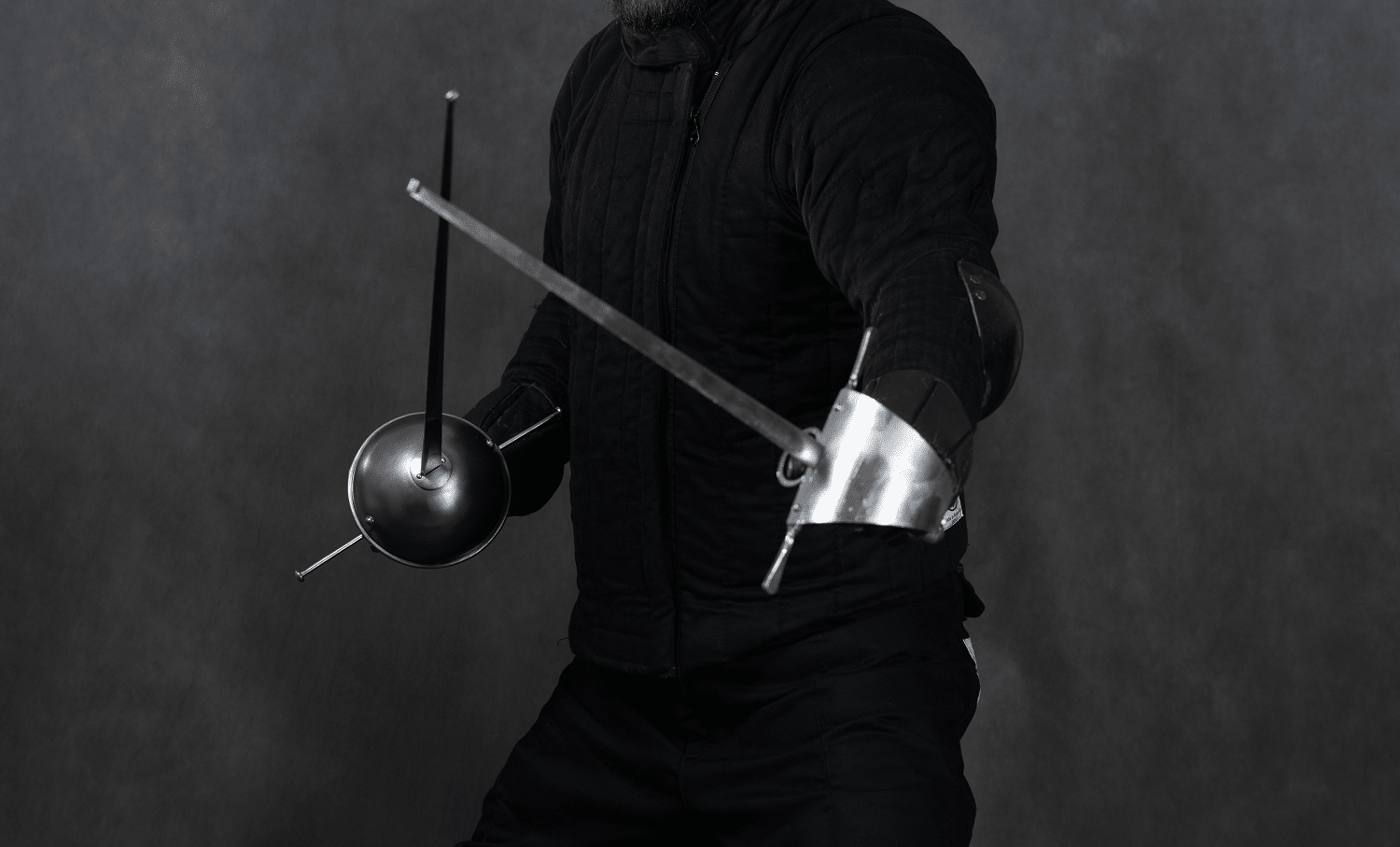Are you looking to build your own Historical European Martial Arts ( HEMA ) studio / gym in your own home? Building a home gym that is for martial arts usage can be more tricky than building a regular home gym, especially when you are studying historical fencing and swordsmanship. This HEMA Resources guide will give you some general advice and recommendations on how to build a martial arts studio for historical fencing in your house, garage or apartment.
Some of this advice is also applicable to opening a HEMA school as well. In fact some HEMA clubs started out as a home studio where a few people trained together in a person’s garage or backyard, before later growing large enough to open a commercial school. Creating a home studio can therefore be a path toward starting your own larger HEMA club.
Where to Build Your HEMA Studio at Home?
You can build it in the garage, a spare bedroom, or even a shed in your backyard. It is also possible to build a dedicated training space on your patio if you don’t have enough space in your backyard to build a shed, so long as your patio is covered.
If you live in an apartment, you may need to make space in a spare bedroom or living room for fencing practice. You might need to move items from the living room into a spare bedroom or downsize however, in order to modify the living room into a home fencing studio.
The most important thing to consider is that you have sufficient space to train. The last thing you want to do is knock over a chandelier or hanging light in your dining room when you raise your sword up into a high guard position, or to accidentally smash out windows and poke holes in your wall should you slip on the floor for some reason. It’s ideal to have a space where you can at least walk three or four paces without bumping into anything.
Necessary Equipment for Your Indoor Historical Fencing Studio
While every martial art studio has different requirements based on the type of martial arts you intend to study, there are some common things useful to all kinds and Historical Fencing is no exception.
You will want to have at least one good mirror that is large enough so you can that you can see yourself while you perform techniques. Observing your own reflection in a mirror is a time-proven method to make it makes it easier to spot mistakes and make corrections in your form.
Some excellent mirrors to purchase for HEMA training use are activity mirrors, the kind you normally see inside gyms. While these may seem more expensive than regular mirrors, they can actually be very affordable. While a large martial arts studio might have several of these installed against a wall your home gym likely only needs one of them.
Next, depending on whether you want to also practice grappling in your home studio, you might consider installing interlocking cushioned foam tiles. These are commonly used in martial art studios and gymnastic gyms, and can also have some value to HEMA martial artists. One thing to consider however is that as a primarily fencing art it can be good to have a smooth hard wood surface to train on, as a professional fencing salle will have this type of flooring. Yet if you wish to incorporate grappling into your training practices then you will want some kind of cushioned flooring to train upon.
As an alternative to the foam tiles, you can purchase a folding gymnastics mat. These are often used for wrestling and martial art grappling practice as well. A folding gymnastics mat can be useful if you don’t want to have tiles installed in the space all of the time.
Another very useful item to have for your home HEMA fencing studio is a Meyer Square. This is primarily used by German longsword style fencers however it can be useful for all sword styles, as the concept is to use the square as an aid for solo drilling practice with cuts.
If you have the space and budget for it you should also build or purchase something that can be used as a pell or a fencing training dummy. We talk at length about different types of pells and fencing dummies in our article, HEMA Pell and Medieval Sword Practicing Dummy Designs for Solo Training. You should read this article for advice and suggestions on how to build the right type within your needs.
If you lack the space to fully swing a sword indoors then you might consider making an investment into an indoor trainer. There are several companies which make these. Although they do not have a full sized blade, these practice weapons are weighted to feel somewhat like a full sized sword and can allow for drilling inside smaller spaces.
It should also go without saying that if you intend to practice with a training partner at your home HEMA studio then you also need protective equipment for drills and free style sparring. For detailed guides on what equipment to purchase for this, you should read the following articles on our website,
If you intend to engage in test cutting practice as part of your HEMA training it’s recommended that you have a good stand for doing test cutting against foam pool noodles or tatami. You should also read our article on choosing an affordable sharp long sword for test cutting practice, if this is something you’re interested in pursuing. Many commercially sold “sharp” swords are not actually meant for test cutting with, and can easily break due to poor forging techniques. You want to select a sword that is actually forged for test cutting with. Also this is something you should only practice outdoors and not inside your home.
Finally, it would be a good idea to have essential medical items for treating any wounds you or your training partner might accidentally gain during practice. While injuries are rare, it’s always good to have first aid on hand. You should read our article, How to Create a Trauma Wound Kit for HEMA That Can Store in Your Bag for specific advice on what you should have for treating injuries.
Recommended Weight Lifting and Strength Building Equipment for a HEMA Gym
It can be a good idea to have your home fencing studio also serve double-duty as a strength training space. We have written several past articles that provide advice and recommendations on different strength training exercises and equipment that are beneficial to Historical European martial artists. You should read them for more detailed information on what kind of equipment you might want to have for your home HEMA studio.
- Fitness Equipment for Historical Fencers For Home Workouts
- Strength Training and Body Conditioning Exercises for HEMA
- Weight Lifting for Building Power in HEMA
- Nutrition for Historical European Martial Artists
Learning HEMA As Self-Study In Your Home Studio
It may be the case that you have decided to start your home martial arts studio to teach yourself HEMA as there is no other clubs local to you. In this case it is a good idea to explore the ways you can learn HEMA on your own.
Our article, How to Learn HEMA When There is No Local Club Near You provides some excellent advice on how to learn HEMA as a solo practitioner.
We also have a dedicated section of our website to listing all of the major source manuscripts for learning Historical European martial arts in our Learn HEMA section. Whether you wish to study the long sword, messer, saber, sword and buckler, great sword or even mounted combat, we list all of the major manuscripts and companion books for learning HEMA in this section of our website.
*****
We hope this article on how to start a small training space for HEMA in your home helps you start your journey into learning historical sword fighting.
If you’d like to learn more information about historical fencing practices please check out our Learn HEMA page for a guide to learning about the historical weapon that interests you. You can also find more guides we’ve written about other topics at our Helpful Guides page. You can also join the conversation at our forums or our Facebook Group community.
